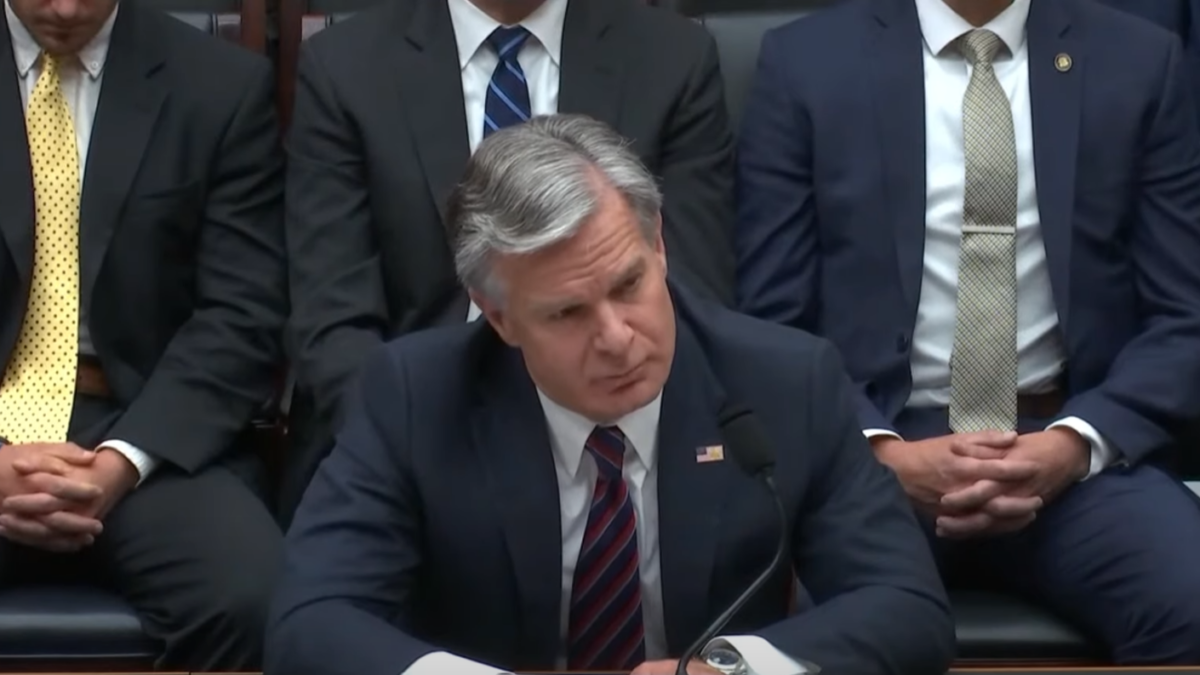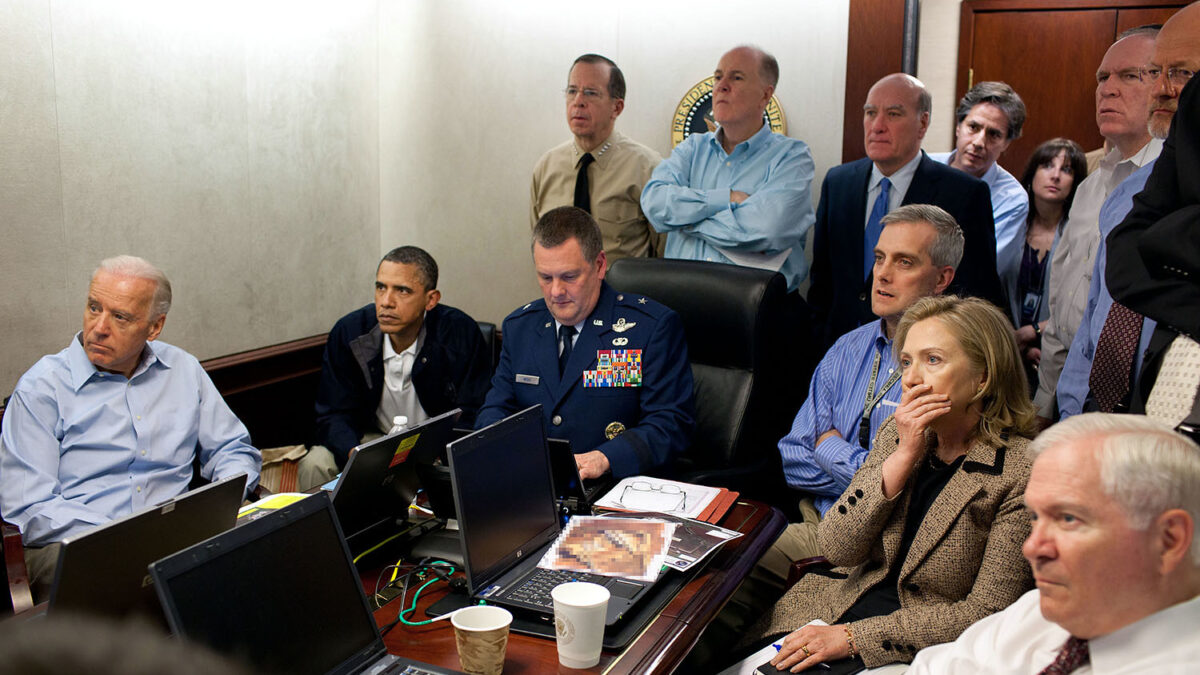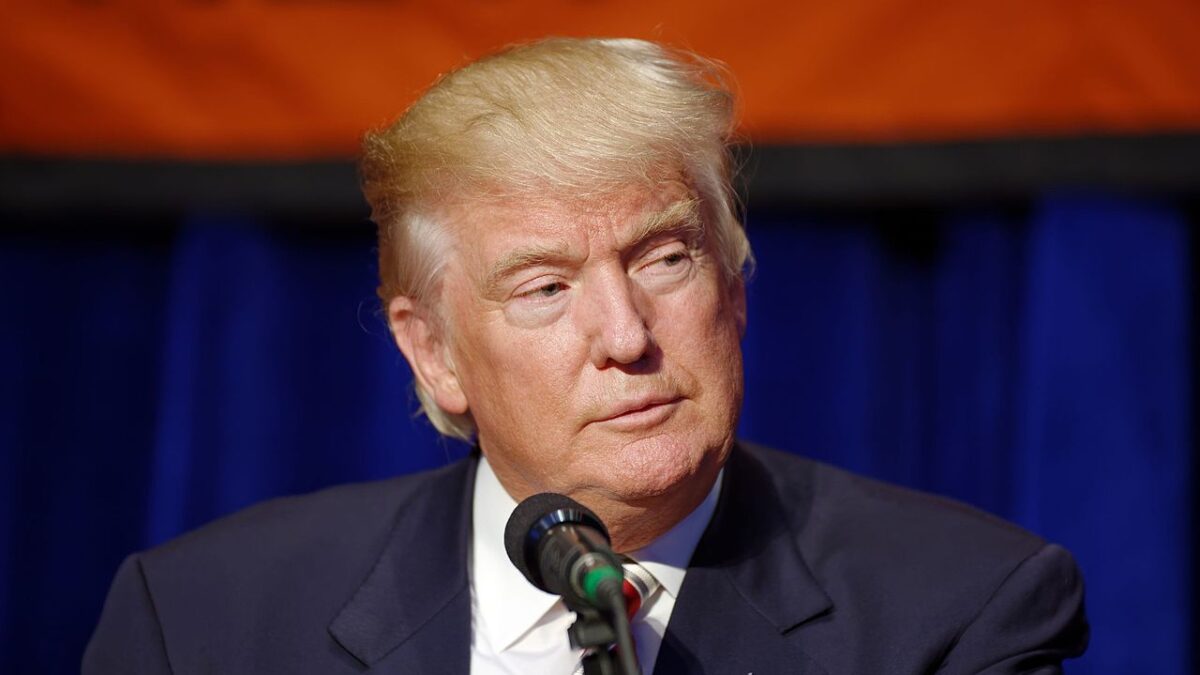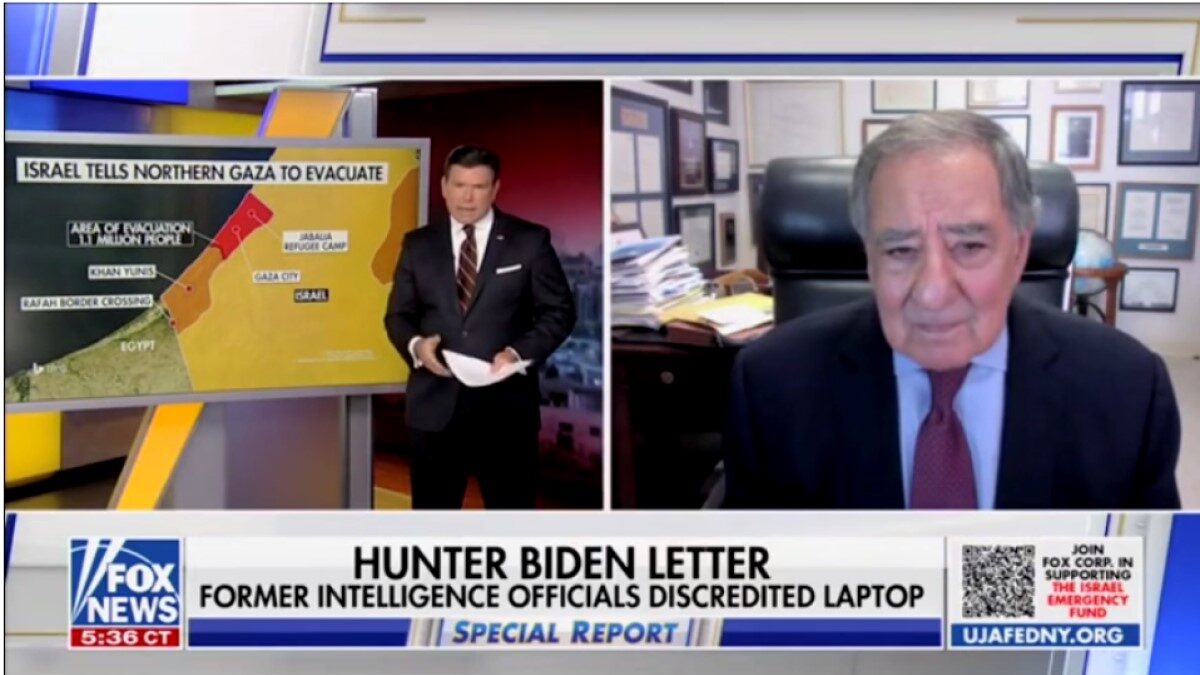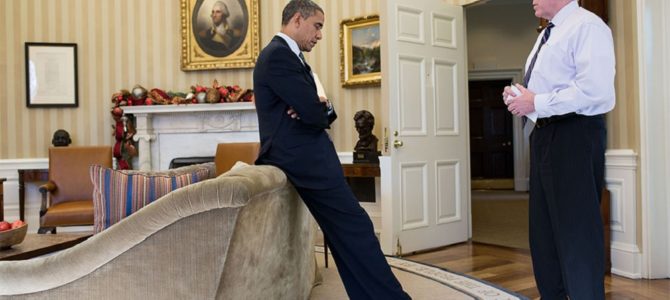
The following is an excerpt from Lee Smith’s book out October 29, “The Plot Against the President: The True Story of How Congressman Devin Nunes Uncovered the Biggest Political Scandal in U.S. History.”
AFTER DONALD TRUMP was elected forty-fifth president of the United States, the operation designed to undermine his campaign transformed. It became an instrument to bring down the commander in chief. The coup started almost immediately after the polls closed.
Hillary Clinton’s communications team decided within twenty-four hours of her concession speech to message that the election was illegitimate, that Russia had interfered to help Trump.
Obama was working against Trump until the hour he left office. His national security advisor, Susan Rice, commemorated it with an email to herself on January 20, moments before Trump’s inauguration. She wrote to memorialize a meeting in the White House two weeks before.
On January 5, following a briefing by IC leadership on Russian hacking during the 2016 Presidential election, President Obama had a brief follow-on conversation with FBI Director Jim Comey and Deputy Attorney General Sally Yates in the Oval Office. Vice President Biden and I were also present.
President Obama began the conversation by stressing his continued commitment to ensuring that every aspect of this issue is handled by the Intelligence and law enforcement communities “by the book.” The President stressed that he is not asking about, initiating or instructing anything from a law enforcement perspective. He reiterated that our law enforcement team needs to proceed as it normally would by the book.
From a national security perspective, however, President Obama said he wants to be sure that, as we engage with the incoming team, we are mindful to ascertain if there is any reason that we cannot share information fully as it relates to Russia. . . .
The President asked Comey to inform him if anything changes in the next few weeks that should affect how we share classified information with the incoming team. Comey said he would.
The repetition of “by the book” gave away the game—for there was nothing normal about any of it.
Rice wrote an email to herself. It commemorated a conversation from two weeks before. The conversation was about the FBI’s investigation of the man who was about to move into the White House—an investigation from which Obama was careful to distance himself. During the conversation, the outgoing president instructed his top aides to collect information (“ascertain”) regarding the incoming administration’s relationship with Russia.
“To any rational person,” says Nunes, “it looks like they were scheming to produce a get-out-of-jail-free card—for the president and anyone else in the White House. They were playing Monopoly while the others were playing with fire. Now the Obama White House was in the clear—sure, they had no idea what Comey and Brennan and McCabe and Strzok and the rest were up to.”
Boxing Trump in on Russia
Meanwhile, Obama added his voice to the Trump-Russia echo chamber as news stories alleging Trump’s illicit relationship with the Kremlin multiplied in the transition period. He said he hoped “that the president-elect also is willing to stand up to Russia.”
The outgoing president was in Germany with Chancellor Angela Merkel to discuss everything from NATO to Vladimir Putin. Obama said that he’d “delivered a clear and forceful message” to the Russian president about “meddling with elections . . . and we will respond appropriately if and when we see this happening.”
After refusing to act while the Russian election meddling was actually occurring, Obama responded in December. He ordered the closing of Russian diplomatic facilities and the expulsion of thirty- five Russian diplomats. The response was tepid. The Russians had hacked the State Department in 2014 and the Joint Chiefs of Staff in 2015. And now Obama was responding only on his way out.
Even Obama partisans thought it was weak. “The punishment did not fit the crime,” said Michael McFaul, Obama’s former ambassador to Russia. “The Kremlin should have paid a much higher price for that attack.”
But the administration wasn’t retaliating against Russia for interfering in a US election; the action was directed at Trump. Obama was leaving the president-elect with a minor foreign policy crisis in order to box him in. Any criticism of Obama’s response, never mind an attempt to reverse it, would only further fuel press reports that Trump was collaborating with the Russians.
Spreading Intelligence to Spring Leaks
In the administration’s last days, it disseminated intelligence throughout the government, including the White House, Capitol Hill, and the intelligence community (IC). Intelligence was classified at the lowest possible levels to ensure a wide readership. The White House was paving the way for a campaign of leaks to disorient the incoming Trump team.
The effort, including the intended result of leaks, was publicly acknowledged in March 2017 by Evelyn Farkas, a former deputy assistant secretary of defense in the Obama administration.
Obama’s biggest move against Trump was to order CIA director John Brennan to conduct a full review of all intelligence relating to Russia and the 2016 elections. He requested it on December 6 and wanted it ready by the time he left office on January 20. But the sitting president already knew what the intelligence community assessment (ICA) was going to say, because Brennan had told him months before.
Brennan’s handpicked team of CIA, FBI, and NSA analysts had started analyzing Russian election interference in late July. In August, Brennan had briefed Harry Reid on the dossier and may have briefed Obama on it, too. Earlier in August, Brennan sent a “bombshell” report to Obama’s desk.
When Brennan reassembled his select team in December, it was to have them reproduce their August findings: Putin, according to Brennan, was boosting the GOP candidate. And that’s why only three days after Obama ordered the assessment in December, the Washington Post could already reveal what the intelligence community had found.
“The CIA,” reported the December 9 edition of the Post, “has concluded in a secret assessment that Russia intervened in the 2016 election to help Donald Trump win the presidency, rather than just to undermine confidence in the U.S. electoral system.”
The story was the first of many apparently sourced to leaks of classified information that were given to the Post team of Adam Entous, Ellen Nakashima, and Greg Miller. The reporters’ sources weren’t whistle-blowers shedding light on government corruption— rather, they were senior US officials abusing government resources to prosecute a campaign against the newly elected commander in chief. The article was the earliest public evidence that the coup was under way. The floodgates were open, as the IC pushed more stories through the press to delegitimize the president-elect.
A Wave of Leak-Sourced Stories All Saying the Same Thing
The same day, a New York Times article by David E. Sanger and Scott Shane echoed the Post’s piece. According to senior administration officials, “American intelligence agencies have concluded with ‘high confidence’ that Russia acted covertly in the latter stages of the presidential campaign to harm Hillary Clinton’s chances and promote Donald J. Trump.”
A December 14 NBC News story by William M. Arkin, Ken Dilanian, and Cynthia McFadden reported that “Russian President Vladimir Putin became personally involved in the covert Russian campaign to interfere in the U.S. presidential election, senior U.S. intelligence officials told NBC News.”
The ICA that Obama ordered gave political operatives, the press, and his intelligence chiefs a second shot at Trump. They’d used the Steele Dossier to feed the echo chamber and obtain surveillance powers to spy on the Trump campaign. The dossier, however, had come up short. Trump had won.
But now, on his way out of the White House, Obama instructed Brennan to stamp the CIA’s imprimatur on the anti-Trump operation. As Fusion GPS’s smear campaign had been the source of the preelection press campaign, the ICA was the basis of the postelection media frenzy. It was tailored to disrupt the peaceful transition of power and throw the United States into chaos.
Because Trump hadn’t been elected by the US public, according to the ICA, but had been tapped by Putin, he was illegitimate. Therefore, the extraconstitutional and illegal tactics employed by anti-Trump officials were legitimate. The ultimate goal was to remove Trump from office.
“If it weren’t for President Obama,” said James Clapper, “we might not have done the intelligence community assessment . . . that set off a whole sequence of events which are still unfolding today.”
Nunes agrees. “The ICA,” he says, “was Obama’s dossier.”
Changing the Intelligence Assessment
Nunes is sitting in his office in the Longworth House Office Building along with his communications director, Jack Langer, a forty-six-year-old former book editor and historian with a PhD from Duke University.
“The social media attacks on Devin began shortly after the election,” Langer remembers. “They’re all hinting at some vast conspiracy involving Russia that the chairman of the Intelligence Committee is part of. And we have no idea what they’re talking about.”
Nunes points out that his warnings about Russia fell on deaf ears for years. “And all of a sudden I’m a Russian agent,” says the congressman.
Now Langer and Nunes see that the attacks were first launched because the congressman had been named to Trump’s transition team. “I put forward [Mike] Pompeo for CIA director,” says Nunes. “He came from our committee.”
The attacks on Nunes picked up after the December 9 Washington Post article. The assessment provided there was not what the HPSCI chairman had been told. The assessment had been altered, and Nunes asked for an explanation. “We got briefed about the election around Thanksgiving,” he says. “And it’s just the usual stuff, nothing abnormal. They told us what everyone already knew: ‘Hey, the Russians are bad actors, and they’re always playing games, and here’s what they did.’”
By providing that briefing, the IC had made a mistake. When it later changed the assessment, the November briefing was evidence that Obama’s spy chiefs were up to no good. “I bet they’d like to have that back,” says Nunes. “They briefed us before they could get their new story straight.”
‘They Kept Everyone Else Away from It’
Nunes acknowledges that he was caught off guard by many things back then. “We still thought these guys were on the up and up,” he says. “But if we knew, we’d have nailed them by mid-December, when they changed their assessment. ‘Wait, you guys are saying this now, but you said something else just a few weeks ago. What’s going on?’”
After the Post story, Nunes wanted an explanation. “We expressed deep concern, both publicly and privately,” says Langer. “We demanded our own briefing to try to determine whether that Post story was true or false. They refused to brief us. They said, ‘We’re not going to be doing that until we finish the ICA.’”
Nunes says the fact that the IC conducted an assessment like that was itself unusual. “I don’t know how many times they’d done that in the past, if ever,” he says. “But if the IC is operating properly, when someone says what can you tell me on X or Y or Z, they have it ready to pull up quickly. The tradecraft is reliable, and the intelligence products are reliable.” That was not the case with the ICA. There were problems with how the assessment had been put together.
“If you really were going to do something like an assessment from the intelligence community, then you’d get input from all our seventeen agencies,” says Nunes. “They did the opposite. It was only FBI, CIA, NSA, and DNI. They siloed it, just like they had with Crossfire Hurricane. They kept everyone else away from it so they didn’t have to read them in.”
‘Manipulation of Intelligence for Political Purposes’
Nunes released several statements in the middle of December. The HPSCI majority, read a December 14 statement, wanted senior Obama intelligence officials “to clarify press reports that the CIA has a new assessment that it has not shared with us. The Committee is deeply concerned that intransigence in sharing intelligence with Congress can enable the manipulation of intelligence for political purposes.”
After the statements warned of political foul play in the IC’s assessments, the social media attacks on Nunes became more regular. “They were constant,” says Langer.
Anti-Trump operatives recognized that Nunes was going to be a problem. The HPSCI chair had previously called out the IC for politicizing intelligence. “They said that we had defeated Al Qaeda in Iraq and Syria,” says Nunes, “and I knew that wasn’t true. Then they withheld the Osama bin Laden documents to conceal that Al Qaeda worked with Iran, because the administration was protecting the Iran deal. So when I saw them changing this assessment of the 2016 election in midstream, I knew it was the same old trick: they were politicizing intelligence.”
The speed with which Brennan’s handpicked analysts produced the ICA and then got a version of it declassified for public consumption was another sign that something wasn’t right. “All throughout Obama’s two terms, his IC chiefs aren’t paying attention to Russian actions,” says Nunes. “We give them more money for Russia, which they don’t use. But now they know so much about Putin that they manage to produce a comprehensive assessment of Russian intentions and actions regarding election interference in a month—at Christmastime, when everything slows down. And then they produce a declassified version in a manner of weeks. None of this is believable.”
Three different versions of the ICA were produced: an unclassified version, a top secret one, and another highly compartmentalized version. According to a January 11, 2017, Washington Post story by Greg Miller, Ellen Nakashima, and Karen DeYoung, an annex summarizing the dossier was attached to the versions that were not declassified.
‘Designed to Have a Political Effect’
The FBI had been working from Steele’s reports for more than half a year. Including the dossier along with the ICA would provide Comey with ammunition to take on the president-elect. Both he and Brennan were manipulating intelligence for political purposes.
“A lot of the ICA is reasonable,” says Nunes. “But those parts become irrelevant due to the problematic parts, which undermine the entire document. It was designed to have a political effect; that was the ICA’s sole purpose.”
The assessment’s methodological flaws are not difficult to spot. Manufacturing the politicized findings that Obama sought meant not only abandoning protocol but also subverting basic logic. Two of the ICA’s central findings are that:
- Putin and the Russian government developed a clear preference for President-elect Trump.
- Putin and the Russian government aspired to help President-elect Trump’s election chances when possible by discrediting Secretary Clinton and publicly contrasting her unfavorably to him.
To know preferences and intentions would require sources targeting Putin’s inner circles—either human sources or electronic surveillance. As Nunes had previously noted, however, US intelligence on Putin’s decision-making process was inadequate.
But even if there had been extensive collection on precisely that issue, it would be difficult to know what was true. For instance, the closest you can get to Putin’s inner circle is Putin himself. But even capturing him on an intercept saying he wanted to elect Trump might prove inconclusive. It is difficult to judge intentions because it is not possible to see into the minds of other people. How would you know that Putin was speaking truthfully? How would you know that the Russian president didn’t know his communications were under US surveillance and wasn’t trying to deceive his audience?
Quality control of information is one of the tasks of counterintelligence—to discern how you know what you know and whether that information is trustworthy. There was no quality control for the Trump-Russia intelligence. For instance, Crossfire Hurricane lead agent Peter Strzok was the FBI’s deputy assistant director of counterintelligence. Instead of weeding out flawed intelligence on Russia, the Crossfire Hurricane team was feeding Steele’s reports into intelligence products. Yet the ICA claimed to have “high confidence” in its assessment that “Putin and the Russian Government developed a clear preference for President- elect Trump.” What was the basis of that judgment?
According to the ICA:
Putin most likely wanted to discredit Secretary Clinton because he has publicly blamed her since 2011 for inciting mass protests against his regime in late 2011 and early 2012, and because he holds a grudge for comments he almost certainly saw as disparaging him.
“Most likely” and “almost certainly” are rhetorical hedges that show the assessment could not have been made in “high confidence.” Putin may have held a grudge against Clinton, but there is no way of knowing it.
The supporting evidence deteriorates more the farther the ICA purports to reach into Putin’s mind.
Beginning in June, Putin’s public comments about the US presidential race avoided directly praising President-elect Trump, probably because Kremlin officials thought that any praise from Putin personally would backfire in the United States.
This is absurd. Part of the evidence that Putin supported Trump is that he avoided praising Trump. It is difficult enough to determine intentions by what someone says. Yet the ICA claims to have discerned Putin’s intentions by what he did not say.
There is no introductory philosophy class in logic where reasoning like that would pass muster. Yet Brennan’s handpicked group used it as the basis of its assessment that Putin had helped Trump.
Moscow also saw the election of President-elect Trump as a way to achieve an international counterterrorism coalition against the Islamic State in Iraq and the Levant.
This may be an accurate description of how Putin saw Trump. But Trump’s predecessor also wanted to coordinate anti- ISIS operations with Moscow. On this view, Trump would have represented a continuation of Obama’s ISIS policy. Why would this make Trump’s victory suspicious to Obama’s intelligence chiefs?
Curious Inaccuracies about Russia’s RT Network
The ICA also pointed to documentary evidence of Putin’s intentions: English-language media owned by the Russian government, the news site Sputnik, and the RT network, were critical of Clinton.
State-owned Russian media made increasingly favorable comments about President-elect Trump as the 2016 US general and primary election campaigns progressed while consistently offering negative coverage of Secretary Clinton.
Curiously, just days before the election, the informant the US government sent after the Trump campaign praised the Democratic candidate in an interview with Sputnik. “Clinton would be best for US-UK relations and for relations with the European Union,” Stefan Halper told the Kremlin-directed media outlet. “Clinton is well-known, deeply experienced, and predictable. US-UK relations will remain steady regardless of the winner although Clinton will be less disruptive over time.”
The ICA includes a seven-page appendix devoted to RT, the central node, according to the document, of the Kremlin’s effort to “influence politics, fuel discontent in [sic] US.”
Adam Schiff appeared on RT in July 2013. He argued for “making the FISA court much more transparent, so the American people can understand what’s being done in their name in the name of national security, so that we can have a more informed debate over the balance between privacy and security.”
RT’s editor in chief, Margarita Simonyan, is a master propagandist, according to the ICA. The document fails to mention that Simonyan heads another Moscow-owned media initiative, Russia Beyond the Headlines, a news supplement inserted into dozens of the West’s leading newspapers, including the New York Times. Russia Beyond the Headlines has been delivered to millions of American homes over the last decade. By contrast, RT’s US market share is so small that it doesn’t qualify for the Nielsen ratings. Virtually no one in the United States watches it.
Taking the logic of Brennan’s handpicked team seriously would mean that the publishers of the New York Times played a major role in a coordinated Russian effort to elect Donald Trump.
‘It Was an Operation to Bring Down Trump’
Nunes realized even then the purpose of Obama’s dossier. “Devin figured out in December what was going on,” says Langer. “It was an operation to bring down Trump.”
There was no evidence that any Trump associate had done anything improper regarding the Russians, and Nunes was losing patience. “We had serious things the committee wanted to do,” he says. “With Trump elected, we could do some big stuff, like with China.”
Still, it was important for HPSCI to maintain control of the Russia investigation. Otherwise, Democrats and Never Trump Republicans were likely to get their wish to convene a bipartisan commission to investigate Russian interference—with the purpose of turning it on Trump.
“Before they started floating the idea of a special counsel, the big idea was a special commission like the 9/11 Commission,” says Langer. It was outgoing secretary of state John Kerry who first came forward with the proposal.
The point was to change the power dynamic. “In a normal committee,” says Langer, “the majority has the power, and that happened to be us. They wanted to strip our power and make it fifty-fifty.”
“Bipartisan” was a euphemism for “anti-Trump.” “It would have been a complete joke,” says Nunes. “A combination of partisan hacks from the left and people who hated Trump on the right.”
Democrats led by Schiff and Senate minority leader Chuck Schumer were joined by the late John McCain, the most active of the Never Trump Republicans. After the election, the Arizona senator had instructed his aide David Kramer to deliver a copy of the Steele Dossier to Comey.
“God only knows who they’d have populated that committee with,” says Nunes. “Anyone they could control. It would have been a freak show.”
Speaker of the House Paul Ryan defended HPSCI’s independence. On the Senate side, Intelligence Committee chairman Richard Burr had only one move. To deflect demands for an independent commission, he effectively ceded control of the Senate investigation to his vice chair, Democrat Mark Warner.
No Evidence of Collusion Years Later
Still, Nunes believed that all the talk of Trump and Russia was a waste of time. “They kept promising us evidence of collusion, week after week, and they came up with nothing.”
Nunes’s disdain for the ICA forced the Crossfire Hurricane team’s hand. “Right around the time that they came out with the ICA, they kept saying that we were waiting on something to show us, something important that was coming in,” he says. “They said it was some significant figure who they couldn’t quite track down yet.”
But the FBI knew exactly where its missing link was, the piece of evidence that they thought would convince hardened skeptics like Nunes that collusion was real. They didn’t have to chase him down, because he was sitting at home in Chicago. He submitted to a voluntary interview January 27 and without a lawyer because he had no idea what the FBI had in store for him.
The Crossfire Hurricane team was figuring how they were going to set up the Trump adviser they’d used to open up the investigation in July 2016: George Papadopoulos.


